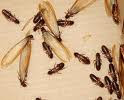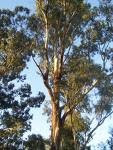:::::::::::::::::::::::::::::::::::::::::::::::::::::::::::::::::::::::::::::::::::::::::::::::::::::
Grasses
***** Location: Kenya
***** Season: Various, see below
***** Category: Plant
*****************************
Explanation
Young grass that comes soon after the long rains, makes goats, cattle and sheep diarrhea because of its low roughage content. Weaver birds use fresh grass to build nests and certain birds only nest in grass such as papyrus, so they only come around when this grass has grown.
Patrick Wafula
:::::::::::::::::::::::::::::::::::::::::::::::::::::::::::::::::::::::::::::::::::::::::::::::::::::
topic for haiku
Napier grass
Pennisetum purpureum (Napier Grass, Elephant Grass or Uganda Grass)
© More in the WIKIPEDIA !
nappier grass
Napier grass is abundant during the long rain season, but it is also available in small quantities, having been spared to cater for the scarcity of fodder during the dry season.
Napier grass has a seasonality: in rural areas, it is inter-cropped with subsistence crops, but it is mostly planted on terraces where it also helps curb soil erosion.
In the urban centres, the grass grows spontaneously along riverbanks or unfarmed fields. It is available in Nairobi along the Ngong River bank that passes just outside Bahati Community Centre Secondary School.
Patrick Wafula
monday evening--
a cow browsing on
dry Nappier grass
Violet Wangira
napier grass-
the eaten portion of
a leaf
Elijah Juma
:::::::::::::::::::::::::::::::::::::::::::::::::::::::::::::::::::::::::::::::::::::::::::::::::::::
kigo for both rainy seasons
young grass
fresh grass
green grass
:::::::::::::::::::::::::::::::::::::::::::::::::::::::::::::::::::::::::::::::::::::::::::::::::::::
kigo for hot and dry season
couch grass
Elytrigia repens (Couch Grass; syn. Triticum repens L., Agropyron repens (L.) P. Beauv., Elymus repens (L.) Digitaria scalarum
© More in the WIKIPEDIA !
.................................................................................

papyrus
Cyperus papyrus (papyrus sedge or paper reed)
© More in the WIKIPEDIA !
related kigo
Papyrus reeds being picked and used
I think that papyrus reeds are a perfect kigo for the rainy season. during this season the reeds flourish especially in stagnant pools and swampy zones.It is during this season that they emerge and when its hot they dry up to golden yellow colour and are plucked for different uses like basketry and making of chairs. Children also use them in their plays.
hussein haji
BUT
Papyrus reeds growing -- kigo for the rainy seasons
flowery papyrus grass —
the cracked soil of the burst
sewage path
January sun -
papyrus weed blooms
turning brown green
Patrick Wafula
shaking papyrus -
a little grebe dives
into the marsh
Andrew Otinga
.................................................................................
red oat grass or red grass
Themeda triandra
. . . More in the WIKIPEDIA !
star grass, African star grass
There are various kinds see
. . . More in the WIKIPEDIA !
:::::::::::::::::::::::::::::::::::::::::::::::::::::::::::::::::::::::::::::::::::::::::::::::::::::
:::::::::::::::::::::::::::::::::::::::::::::::::::::::::::::::::::::::::::::::::::::::::::::::::::::
kigo for the dry seasons
weeds
I have also observed that weeds grow along with the crops, and therefore the start of the dry season is also a good time for weeds to grow in the shambas.
So, I think that the weeds are kigo and can be used for the beginning of the two dry seasons.
Bidens pilosa, Couch grass, Star grass and Napier grass
all these grasses are kigo for the middle of the rainy seasons into the start of the dry seasons; then they dry up (unless watered) and do not grow again until there has been a period of rainfall.
source : Isabelle Prondzynski
Here are some of the most common weeds for both the dry and wet season:
by Patrick Wafula
.................................................................................
black jack: bidens pilosa
http://en.wikipedia.org/wiki/Bidens_pilosa
Bidens pilosa is definitely a weed, and a very undesirable one. I believe it should be a kigo for the season when it produces its clingy seeds -- probably throughout the two dry seasons.
Isabelle Sensei
The common name for Biden's Pilosa is Black Jack.
I agree with Isabelle sensei about the undesirability of the weed and the season it is most rampant. It comes along with crops during both the short and long rain seasons and grows rapidly and in plenty such that if it is not weeded it chokes the crops such as maize, beans, potatoes, etc, of nutrients.
It is known as 'makowe' among the Luhya of western Kenya. When it is mature, its seeds have spikes that enable it to stick to clothes of anyone who comes in contact with them; this is the weed's natural way of spreading or dispersing its seeds!
Patrick Wafula
.................................................................................
couch grass
Couch grass is somewhere half-way between a weed and a useful plant.
Quecke in German
datura stramonium or chinese lantern
devil's horse whip
Achyranthes aspera
dayflower, weed of the rainy season
It is eaten as a vegetable in some parts of Kenya.
http://en.wikipedia.org/wiki/Commelina
MacDonald's Eye Macdonald eye
gallant soldier
Gallinsoga parviflora
mexican marigold
It is locally known as 'begu rahisi' (Luhya) or 'maua madongo' (Luo). It has so many uses in the Kenyan community. One of its uses is the hedge; it is planted around gardens or shambas to enclose and mark bounderies. The other use is herbal; but it has one amazing using known to very few Africans: when mixed with sisal leaves juice and pepper and certain other locally known herbs, it is used to catch fish in shallow streams during the dry season. Boys in the rural do this by dipping large amounts of this concoction and squeezing its juice out upstream and then walking down stream for about 200 metres or so to catch very drunk, floating fish. But after about 2 hours, the fish becomes sober again and disappears under water! The most difficult fish to be 'drugged' is the eel. Even if it gets drugged, it remains very slippery and does not easily float downstream, but you can find it lying tipsily in mud close to the bank...
Read more here on the mexican marigold in the Wikipedia:
en.wikipedia.org/wiki/Mexican_marigold
nut grass
Cyperus rotundas
star grass
Star grass is also a useful plant, as it makes for good lawns and gardens in public parks.
wandering jew
Three species of the spiderwort
Commelina bengalensis
http://en.wikipedia.org/wiki/Wandering_Jew_(disambiguation)
*****************************
Worldwide use
Japan
summer grass
natsukusa ya tsuwamano-domo ga yume no ato
summer grass -
all that remains of
brave warriors' dreams
Tr. Gabi Greve
Matsuo Basho
Warrior (tsuwamono) and haiku
.................................................................................
. Lawn (shiba)
. Pampas grass (susuki, obana)
Miscanthus species, usually M. sinensis
*****************************
Things found on the way
Black nightshade - Solanum nigrum
Double thorn - Oxygonum sinuatum
Oxalis/sorrel
Sodom apple - Solanum Incanum
Sow thistle - Sonchus oleraceus
WEEDS TO BE STUDIED
with illustrations
source : www.elimu.ne
*****************************
HAIKU
children chasing
grasshoppers on tall grasses --
rising sun
yamame
young grass --
two butterflies glide from
goalpost to goalpost
Caleb Mutua
Kenya Saijiki Forum
:::::::::::::::::::::::::::::::::::::::::::::::::::::::::::::::::::::::::::::::::::::::::::::::::::::
two barefooted ladies
pad on soft green grass --
cool highland breeze
Patrick Wafula
Rift Valley, Kenya
:::::::::::::::::::::::::::::::::::::::::::::::::::::::::::::::::::::::::::::::::::::::::::::::::::::
napier grass dances
to the rhythm of the wind --
May rain
Jacinta Wanza
Long Rains Kukai 2009
:::::::::::::::::::::::::::::::::::::::::::::::::::::::::::::::::::::::::::::::::::::::::::::::::::::
dust
on the grass --
sports day
Sebastian Kimey
Dust and Haiku
:::::::::::::::::::::::::::::::::::::::::::::::::::::::::::::::::::::::::::::::::::::::::::::::::::::
going to the stream --
the dew on couch grasses
wets my feet
star grass----
my new white jumper
has stains!
Catherine Njeri
:::::::::::::::::::::::::::::::::::::::::::::::::::::::::::::::::::::::::::::::::::::::::::::::::::::
July 2010
. MORE
haiku on grass
. MORE
haiku on grass from Khadijah
:::::::::::::::::::::::::::::::::::::::::::::::::::::::::::::::::::::::::::::::::::::::::::::::::::::
Patrick Wafula writes in April, 2010:
I took a stroll around Kayole. Then I met a hawker peddling grass brooms! The brooms were made of tall grass still fresh and green but dry. I wish I could know the name of this particular grass, but I do know its appearance and characteristics.
shouting conductors--
a grass-broom hawker
adds to the din
It was red oat grass, as I found out later.
:::::::::::::::::::::::::::::::::::::::::::::::::::::::::::::::::::::::::::::::::::::::::::::::::::::

jua kali artisan
harvesting papyrus--
bird song
Jua kali artisans use mature papyrus to make baskets and beautiful sofa set tapestry.
Patrick Wafula, May 2010
end of July --
Sudan Grass flowers
turning into seeds
an old woman
talks to her goat --
roadside grasses
Patrick Wafula
:::::::::::::::::::::::::::::::::::::::::::::::::::::::::::::::::::::::::::::::::::::::::::::::::::::
Shiki Monthly Kukai
July 2010 Kukai / First Place — 18 Points
leaning papyrus --
the weight of a green
chameleon
~ Parkeenka Ntato
source : Shiki Monthly Kukai
.................................................................................
cold July --
a white golf ball rolls on
the turf grass
~ Duncan Omoto
. More Results of the Shiki July competition
-- GRASSES
by members of the Kenya Saijiki Forum
:::::::::::::::::::::::::::::::::::::::::::::::::::::::::::::::::::::::::::::::::::::::::::::::::::::
cold breeze-
a papyrus waves its
green leaves
Mercy Nzoki
:::::::::::::::::::::::::::::::::::::::::::::::::::::::::::::::::::::::::::::::::::::::::::::::::::::
sewer line--
I pluck macdonald's eye
for my rabbits
Douglas Nugi

*****************************
Related words
*****Bog grasses
Ireland
[ . BACK to WORLDKIGO . TOP . ]
:::::::::::::::::::::::::::::::::::::::::::::::::::::::::::::::::::::::::::::::::::::::::::::::::::::















